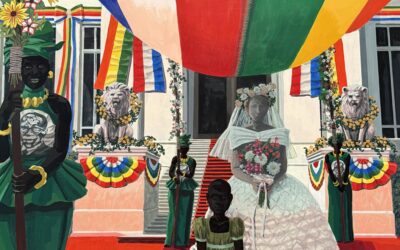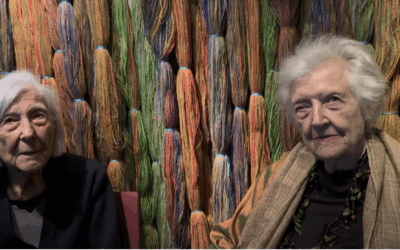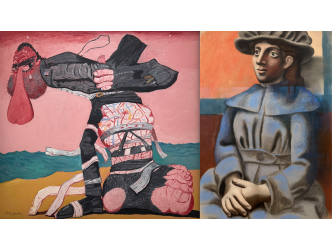Never before attempted
“Here, something never before attempted is being tried: to create the universe, create instinctively, and through love, the universe in which modern art might find both its rightful place and that otherworld once known as the supernatural.” When André Malraux, then France’s legendary first Minister of Culture, inaugurated the Fondation Maeght in the pine grove of Saint-Paul-de-Vence in 1964, he was fully aware of the pioneering nature of the institution. Sixty-one years later, the Fondation continues to set a global example, thanks to the enduring Maeght “magic” that is still felt on every visit.
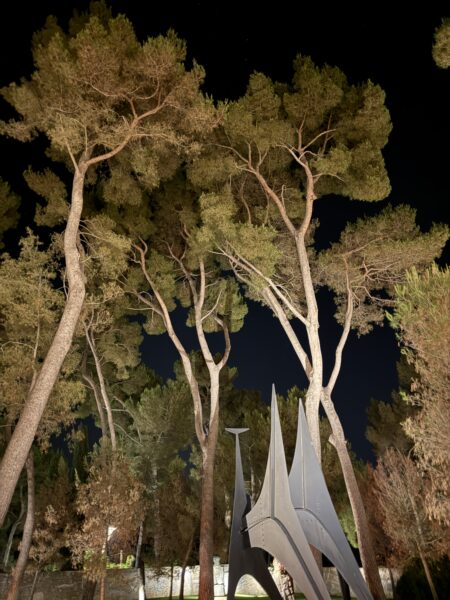
Fondation Maeght
Hypnotic song of the cicadas
It’s not that their exhibitions today are revolutionary. Quite simply, one experiences there a complete harmony between the southern light, the tall pines, the architecture of Josep Lluís Sert and a certain atmosphere, especially in summer, which emanates from the terracotta floor tiles in the galleries to the garden café and Diego Giacometti’s furniture—not to mention the art, impressively displayed both inside the building and out. All this punctuated by the hypnotic song of the cicadas.
Barbara Hepworth
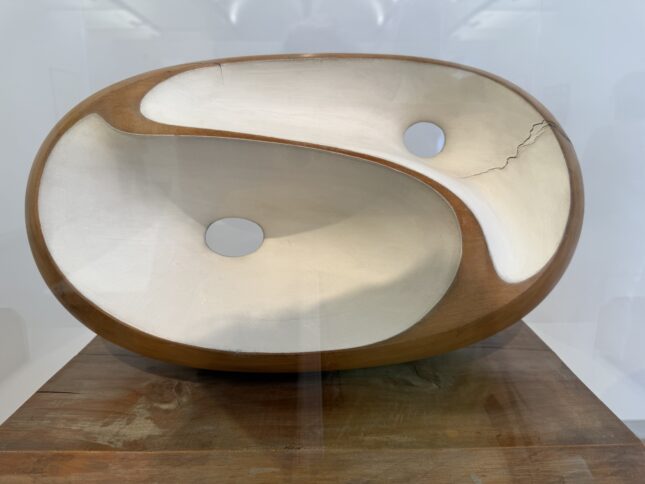
This summer’s exhibition features around one hundred works—sculptures and drawings—dedicated to an artist still relatively unknown in France but celebrated as one of Britain’s great sculptors: Barbara Hepworth (1903-1975). She fits perfectly with the spirit of the Fondation. Both because she twice showed her work here and donated a sculpture in 1968; but also because she belonged to the same artistic constellation as the Giacomettis, Miró, Calder and Braque—all artists who were part of the Maeght circle.
From Yorkshire
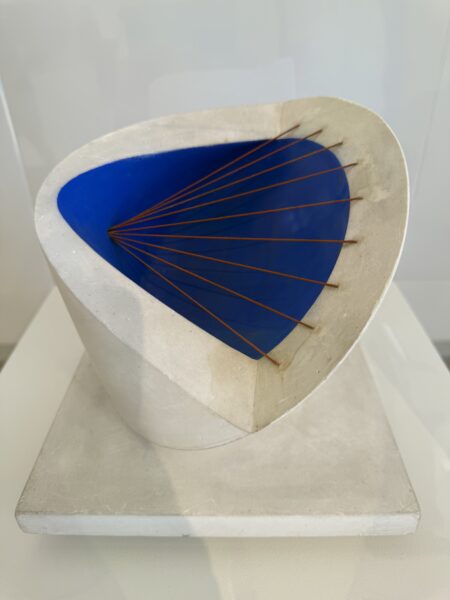
Barbara came from Yorkshire, just like her friend and contemporary Henry Moore (1898-1986) and David Hockney (born in 1937), whose work is currently on view at the Fondation Louis Vuitton (See here the report about the Hockney show at Fondation Louis Vuitton). She was once married to Ben Nicholson (1894-1982), one of the big celebrities of British abstract painting. The two are said to have influenced one another.
Brancusi
We can imagine, too, that her 1933 visit to the Paris studio of Brancusi, the master of distilled form, left a lasting mark (See here the report about the last Brancusi show at Centre Pompidou). A year later, she sculpted “Mother and Child” in stone, a piece in which maternity is distilled into two interlocking shapes. Anecdotally, she was mother to four children. And it was during the same trip to Paris that she met another magician of three-dimensional abstraction, Jean Arp (1886-1966).
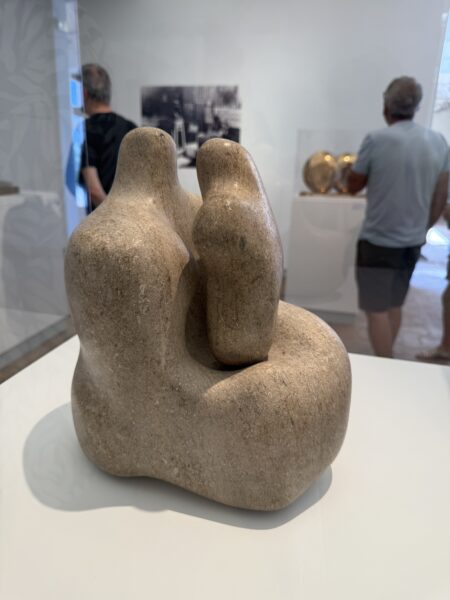
Eleanor Clayton
It’s evident that Hepworth belonged to an artistic network shaped by the flow of innovative ideas across both sides of the Channel. According to exhibition curator Eleanor Clayton, Hepworth sought “to express, through abstraction, what she felt profoundly in her relationship to the landscape: birds in flight, the movement of the sea… She was a deeply spiritual person and believed abstraction to be a universal language.”
Influences

Not every sculpture in the show achieves the same level of achievement, and one might have wished for a monumental piece in the garden. Still, the show allows for the rediscovery of a great British artist, and illustrates her influence on later generations of sculptors, such as on the famed British sculptor, Richard Deacon (born in 1949). Hepworth’s formal vocabulary centers on curves, often traversed by taut strings that give her works the air of musical instruments.
Supernatural spirit
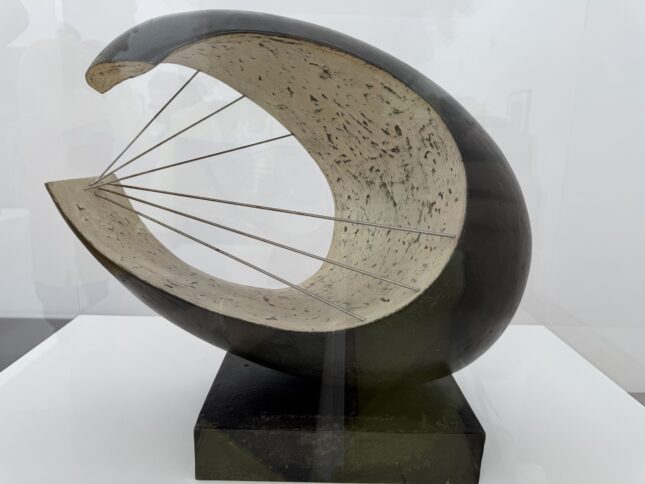
To the surprise of her male contemporaries, she wasn’t afraid of attacking raw materials like marble in order to create geometric forms. But she also worked with plaster, wood and, from the 1950s onward, metal.
For Hepworth, simple forms speak of our relationship to the world; paired forms mirror the ties between living beings; and pierced, enclosed forms suggest our place in the universe. It’s a vision of the cosmos that resonates with Malraux’s own supernatural spirit.
Through November 2
https://www.fondation-maeght.com/
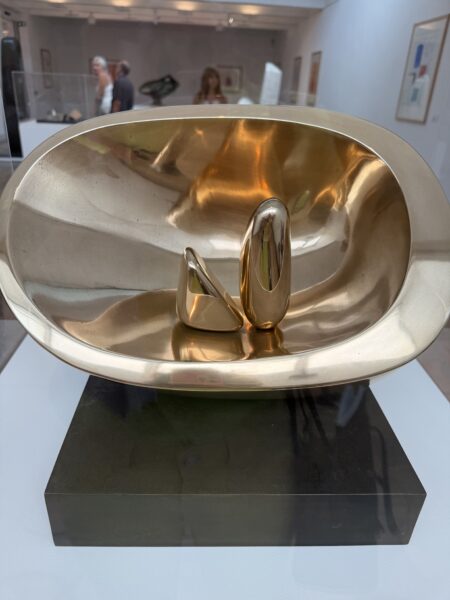
Support independent art journalist
If you value Judith Benhamou Reports, consider supporting our work. Your contribution keeps JB Reports independent and ad-free.
Choose a monthly or one-time donation — even a small amount makes a difference.
You can cancel a recurring donation at any time.


